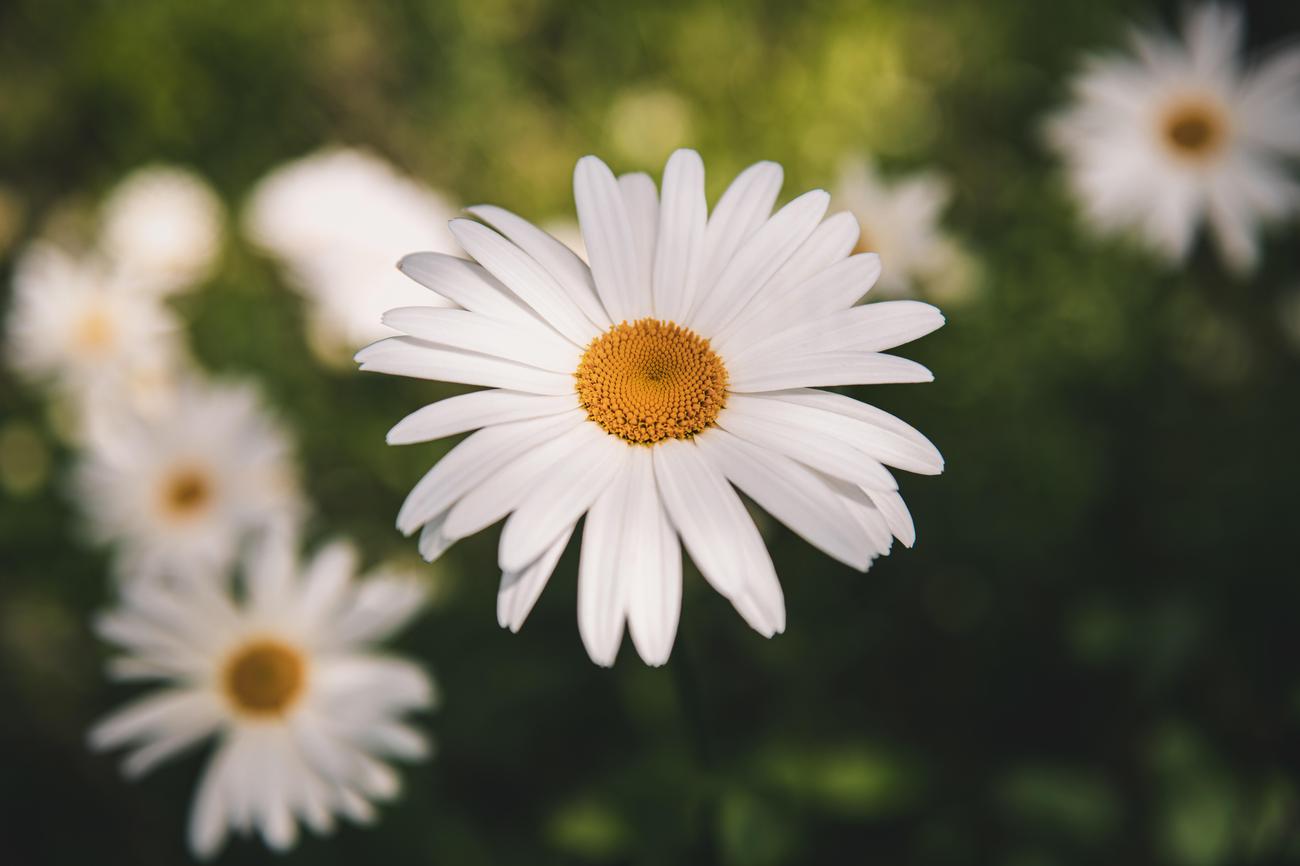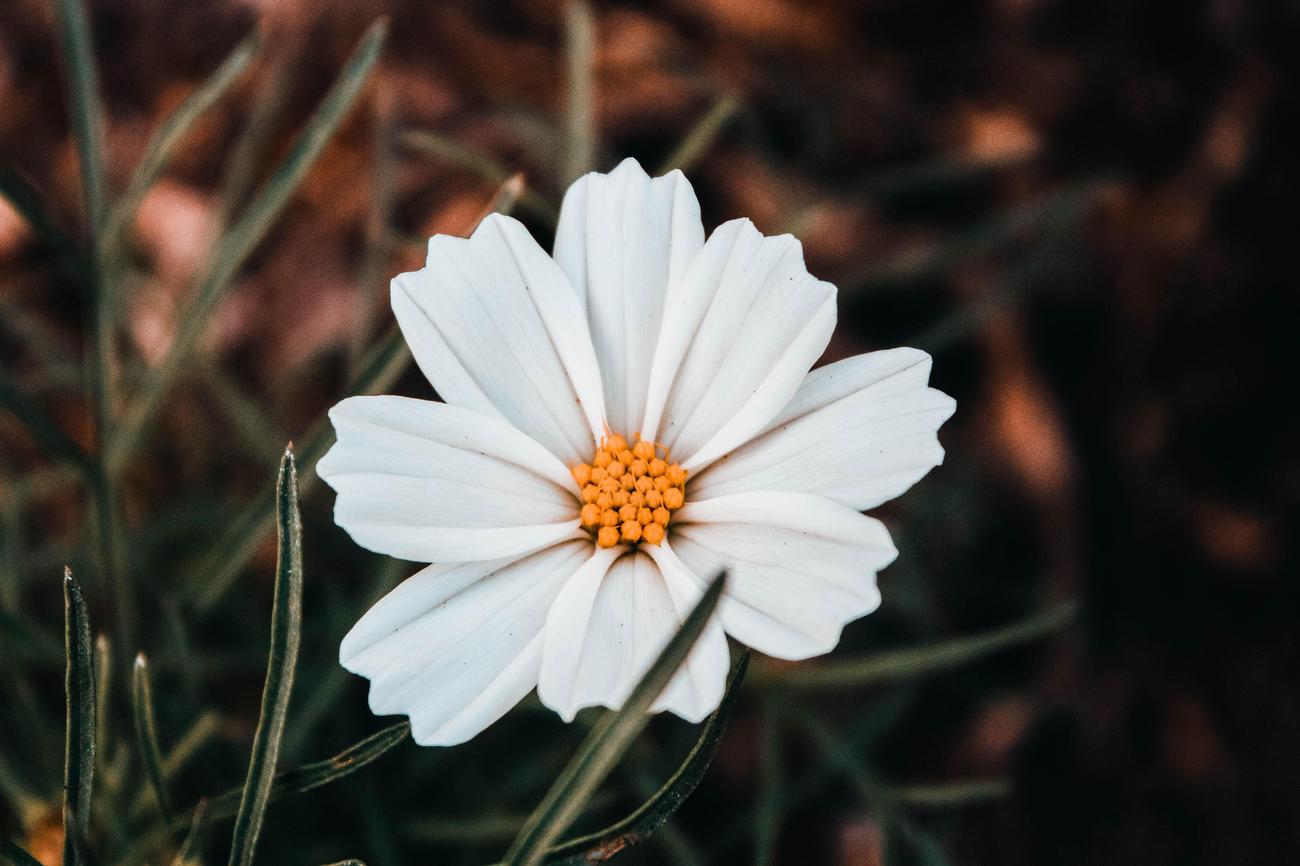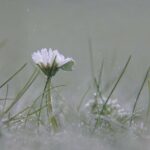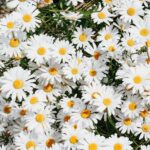Welcome to the enchanting world of daisies. In this article titled “Daisy Flower: Unveiling the Enchanting World,” we will journey together through the fascinating realm of these delicate and captivating blooms. As an experienced horticulturist and lover of nature, I am thrilled to share my extensive knowledge and passion for daisies with you. Throughout this article, we will explore the history, cultural significance, gardening tips, and even artistic inspiration that these radiant flowers offer. Get ready to embark on a captivating adventure that will leave you in awe of the diverse and mesmerizing world of daisies.

Daisy Flower
Ah, the daisy flower. It’s hard to resist the whimsical charm of these little beauties. With their delicate petals and cheerful demeanor, daisies have captured the hearts of many gardeners and nature enthusiasts alike. But there’s more to these seemingly simple flowers than meets the eye. Let’s delve into the enchanting world of daisies and unveil their unique characteristics, cultural significance, and tips for growing them.
A Glimpse into the Daisy Family
Daisies, belonging to the aster family (Asteraceae), are renowned for their composite flower structure. While many flowers consist of a single bloom, daisies are made up of clusters of tiny flowers, known as florets, surrounded by ray-like petals. This intricate design is what gives daisies their distinctive appearance and adds to their allure.
Did you know that the scientific name for the common daisy is Bellis perennis? It’s quite a fancy name for such an unpretentious flower. Speaking of names, “daisy” actually comes from the phrase “day’s eye.” Why? Well, because these adorable flowers open up during the day and gently close their petals at night, like little eyes bidding farewell to the sun.
“Daisies, with their composite flower structure and unique day-to-night habits, truly embody the wonders of nature.”
Symbolism and Spiritual Significance
Beyond their physical attributes, daisies carry a wealth of symbolism and spiritual significance. These flowers have long been associated with new beginnings, rebirth, and love. Their cheerful and innocent appearance also brings about connotations of beauty, purity, hope, and affection. It’s no wonder they often find their way into bouquets and floral arrangements meant to express joy and happiness.
Looking deeper into spirituality, daisies symbolize faith, eternal life, and even reincarnation. Their resilience and ability to flourish in various conditions reflect the enduring nature of the human spirit and the cyclic nature of life itself. Quite remarkable for such a seemingly modest flower, don’t you think?
“Daisies, with their versatile symbolism and spiritual connotations, remind us of life’s boundless possibilities and the beauty of the human spirit.”
Daisies as Herbal Remedies and Culinary Delights
Did you know that daisies have practical uses beyond their ornamental value? These delightful flowers have a place in herbalism and culinary arts as well. Throughout history, daisies have been lauded for their medicinal properties. From soothing skin irritations to relieving indigestion, daisy-based remedies have been utilized for various ailments.
In the culinary world, daisies offer a touch of whimsy and flavor. The leaves of certain daisy species, such as the common daisy, are edible and can be incorporated into salads or used as a garnish. Imagine adding a sprinkle of dainty daisy leaves to your plate, not only for visual appeal but also to infuse your dishes with a hint of freshness.
“Beyond their allure, daisies continue to captivate us with their medicinal prowess and culinary versatility.”
A Kaleidoscope of Daisies
Now, let’s explore the diverse world of daisy varieties. Daisies display a stunning array of colors, ranging from crisp white and sunny yellow to soft pink and vibrant red. Each species boasts its unique hues, adding vibrancy to gardens and floral displays.
Some daisies are annuals, completing their life cycle within a year, while others are biennials or perennials, gracing us with their presence for several years. Remember, if you want to encourage a second flowering, simply dead-head the spent blossoms. It’s like giving these flowers a second chance to shine, just like life’s many opportunities for growth and renewal.
“A kaleidoscope of daisy varieties awaits, offering a burst of color and long-lasting beauty to your garden or vase.”
Gardening Tips for Daisy Enthusiasts
For all the green thumbs and aspiring gardeners out there, here are some tips for successfully growing daisies:
Choose the Right Variety: Select a daisy species that suits your climate and garden conditions. From the classic English daisies to the vivid blooms of painted daisies, there’s an abundance of choices to complement your landscape.
Provide Adequate Sunlight: Daisies thrive in full sun, so make sure to plant them in a location that receives at least six hours of direct sunlight per day.
Well-Drained Soil: Daisies prefer well-drained soil, so ensure proper drainage by adding organic matter or sand to heavy soils.
Water Moderately: While daisies can tolerate short dry periods, it’s essential to water them consistently, especially during hot summer days.
Fertilize Sparingly: Daisies generally don’t require heavy fertilization. A light application of a balanced fertilizer in early spring should be sufficient to support their growth.
“With the right care and a touch of gardening magic, daisies will reward you with their timeless beauty and captivating presence.”
In Conclusion
The enchanting world of daisies holds countless secrets waiting to be discovered. From their symbolic meanings and medicinal properties to their vibrant color palettes and gardening allure, daisies continue to captivate our hearts and engage our senses. So why not embrace the simplicity and grace of this beloved flower? Let daisies inspire you to appreciate the beauty that surrounds us and the joy that blossoms in every new beginning.
As the old saying goes, “Every flower must grow through dirt.” And just like the resilient daisy, we too can bloom amidst life’s challenges and find solace in the promise of a fresh start.
“In the world of daisies, simplicity meets complexity, and beauty flourishes in the humblest of blooms.”
Flowers are a source of endless fascination for people all around the world. From their stunning beauty to their diverse range of colors and scents, it’s no wonder they have captivated our hearts throughout history. If you’re curious to learn some fascinating facts about flowers, click here to uncover the hidden wonders that these delicate creations hold within them. Don’t miss out on the chance to delve into the intriguing world of flowers and discover their incredible secrets firsthand.
How to Draw a Daisy Flower: A Step-by-Step Guide
[youtube v=”TMYhplLC9oo”]
Introduction
[H2] Learn How to Draw a Beautiful Daisy Flower with Easy Steps
Have you ever wanted to draw a daisy flower but weren’t sure where to start? In this step-by-step guide, we will show you how to draw a daisy flower in a simple and enjoyable way. Whether you are a young artist or simply looking for a fun creative activity, this tutorial is perfect for you. Grab your markers, paper, and enthusiasm as we begin this artistic adventure together!
Drawing a Daisy Flower
The process of drawing a daisy flower is made easy with clear instructions and helpful tips. Let’s dive into the steps:
[H3] Step 1: Begin with a Circle in the Center
Start by drawing a circle in the middle of your paper. This will serve as the base for the daisy flower. The size of the circle can vary based on your preference.
[H3] Step 2: Drawing the Petals
Next, it’s time to draw the petals of the daisy flower. The petals should be long and look like ovals. Begin by drawing one petal, pointing straight up in the air. Then, rotate your paper to make it easier to draw the other petals. Each petal should be drawn in an upward direction, creating a beautiful array of elongated shapes.
[H3] Step 3: Filling in the Spaces
To complete the daisy flower, we need to fill in the empty spaces between the petals. Draw additional petals that overlap with the existing ones, giving the flower a more realistic and full appearance. You can vary the sizes and positions of these petals to add depth and dimension to your drawing.
[Quote] “By filling in the overlapping spaces, your daisy flower will look more vibrant and visually appealing.”
Coloring Your Daisy Flower
After completing the drawing, it’s time to add color to your daisy flower. Here are the steps to follow:
[H3] Step 1: Coloring the Center
Begin by coloring the center of the daisy flower with yellow. Fill it in carefully, making sure to cover the entire area.
[H3] Step 2: Adding Shading
To give your daisy flower more depth, use an orange marker to add shading to the bottom part of the center. This creates a rounder and more realistic appearance.
[H3] Step 3: Shading the Petals
Using a gray marker, add shading to the petals of the daisy flower. Start by creating a shadow near the center, gradually fading it out as you move towards the edges. This technique adds depth and dimension to the flower, making it appear more textured and life-like.
[Quote] “By adding shading, you can make your daisy flower more visually captivating, with petals that seem to come alive on the page.”
Additional Tips and Ideas
Now that you have successfully drawn and colored a beautiful daisy flower, here are some additional tips and ideas to consider:
Plant Symbolism: Daisies are associated with new beginnings, love, beauty, and purity. They also symbolize faith, eternal life, and reincarnation. Incorporate these meanings into your artwork or explore daisies’ significance in different cultures.
Medicinal Uses: Some daisy species have medicinal properties and can be used in herbal remedies. Research and explore the therapeutic benefits of daisies in traditional medicine.
Edible Leaves: Certain daisy species have edible leaves that can be incorporated into culinary arts. Discover how to use these leaves in various dishes or explore unique recipes that feature daisies as an ingredient.
Growing Daisies: If you are inspired to grow daisies in your own garden, consider these tips: choose the right daisy variety, provide adequate sunlight, use well-drained soil, water moderately, and fertilize sparingly. Enjoy the beauty of daisies in your own backyard.
[Quote] “Daisies offer endless possibilities for exploration, from their symbolic significance to their practical uses in gardening and culinary arts.”
Conclusion
Drawing a daisy flower is a delightful and rewarding creative experience. Through simple steps and easy-to-follow instructions, you can create a beautiful representation of this beloved flower. Remember, daisies symbolize new beginnings and hold deep meanings in various cultures. By adding color and shading, your daisy flower will come to life on the page, captivating both artist and viewer alike.
[H2] Embrace the Beauty of Daisies Through Artistic Expression
Let the humble daisy inspire you to appreciate the beauty in every fresh start. As you draw and color each petal, reflect upon the resilience of these flowers and the promise they hold. Whether you choose to draw a single daisy or a field of them, let your creativity bloom and find solace in the creative process. So, grab your markers, let your imagination soar, and embark on this artistic journey to capture the charm of daisies on paper. Happy drawing!

FAQ
Question 1: What is the scientific name of the common daisy?
Answer 1: The scientific name of the common daisy is Bellis perennis.
Question 2: What do daisies symbolize?
Answer 2: Daisies symbolize new beginnings, rebirth, love, cheerfulness, beauty, purity, innocence, hope, fun, and affection.
Question 3: Can daisy flowers be used for medicinal purposes?
Answer 3: Yes, daisy flowers can be used for herbalism, medicine, and food, as they have medicinal properties.
Question 4: How often do daisies bloom?
Answer 4: Daisies typically bloom once during a season, but dead-heading spent blossoms can encourage a second flowering.
Question 5: What are some popular varieties of daisies for gardens?
Answer 5: Some popular varieties of daisies for gardens include painted daisies, English daisies, and Gerbera daisies.
- How the Telephone Revolutionized Business: A Historical Perspective - April 19, 2025
- Understand bone yellow: Colorism’s impact on Black communities - April 19, 2025
- Green Natural Sandstone: Eco-Friendly Building Solutions - April 19, 2025
















